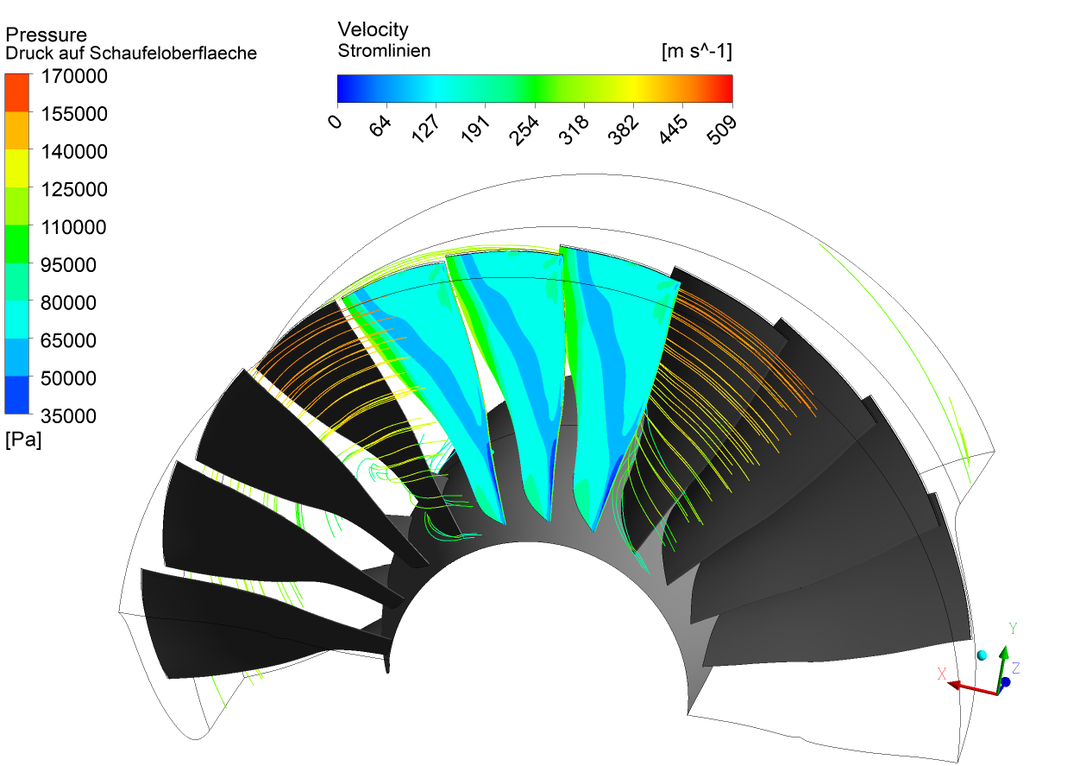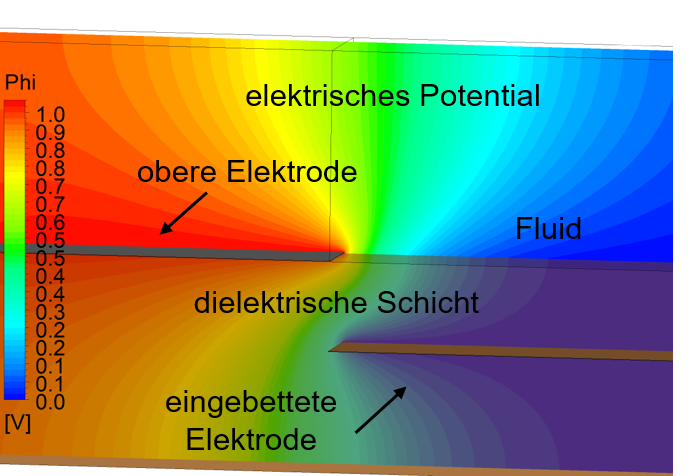Active Control of Stall Flutter of a Turbomachine Blading System
This project studies stall flutter suppression by means of plasma actuation. Blade flutter describes the unstable dynamic behavior of turbomachinery blades interacting with the surrounding airflow. This leads to fast growing oscillation amplitudes, which at the end results in the destruction of the blading. In the case of transonic stall flutter, flow separations occur as a consequence of post shock compressions. In this work a closed loop control for transonic stall flutter on an aero engine fan will be numerically built up.
Plasma actuators are a relatively new actuator technology, but one that has attracted increasing interest in the research community in recent years. These actuators consist of two electrodes separated by a dielectric layer. One of them is in contact with the flow. The other is built into the structure at a small distance from the surface. A high voltage is applied, which ionizes the surrounding air, allowing a force to be induced into the flow. Plasma actuators are lightweight and have no moving parts. The last feature is a decisive criterion for the reliability of operation in the presence of strong centrifugal forces that occur in the rotating parts of turbomachinery. Plasma actuators have virtually no reaction time, which makes them suitable for influencing high-frequency phenomena. They also have a low power consumption due to the low current required.
At the beginning of the plasma actuator research, only low forces were reached. But successively higher forces on the flow were achieved as time progresses.
In this project the aeroelastic behaviour of the fan will be assessed by unsteady 3D computational fluid dynamic (CFD) simulations. First the most unstable operating point in the regime of transonic stall flutter and the most unstable oscillation mode will be determined. Then CFD computations of the fan equipped with plasma actuators modeled numerically will be performed. The plasma actuators will be modelled as proposed by Suzen [1].

A parametric study will be carried out to derive the plasma actuator position with the highest influence on the fan aeroelastic stability. This latter will be quantified by means of the energy method. A suitable control law will be developed as well to maximize actuation effect on the stability. It will be implemented in the CFD simulations to check its operation with high fidelity simulations. Namely, unsteady 3D simulations will be performed to assess ultimately the capabilities of the closed-loop plasma-based control in increasing the fan aeroelastic stability.


